Russian Food: Basic Overview
Common Ingredients
Common Cooking Methods
Courses
Meals
Key Taste
Eating Etiquette
Meal Presentation
Culinary Festivals
Influence and Fusion
Popular Types of Russian Food
-
Soups
Russia is renowned for its diverse soups packed with flavors.
Russian soups incorporate meat, vegetables, herbs, and dairy products.
There are many types of hot and cold soups, which are suitable for all seasons.
-
Pancakes
In Russia, pancakes are widely enjoyed as an appetizer, a breakfast dish, or a side dish with savory food.
They are usually made with wheat or buckwheat flour.
Russian pancakes often have a neutral flavor, but some are enriched with sugar and dairy products and can serve as desserts.
-
Desserts
Russians often conclude meals with sweet desserts like candy, cookies, or fruit preserves.
Wheat flour, fruits, honey, cheese, and fruits are popular ingredients for making Russian desserts.
Certain desserts are tied with holidays and special occasions.
-
Cakes and Pastries
Cakes and pastries are ubiquitous in Russia, with pirog (baked dough) as a popular category.
Traditional pies with savory fillings of meat and mushrooms have been a cornerstone of local cuisine since ancient times.
Sponge cakes became popular in Russia after interactions with Western European cuisine.
Russian dishes are passed down through generations in Russia, the largest country in the world. These dishes reflect the country’s vast landscapes and storied history.
Due to the country’s diverse climate and geography, Russian dishes come in many regional variations. Popular ingredients are wheat flour, cabbage, chicken, lamb, and fish.
Local food offerings range from salads and porridge to desserts and pastries. Soups and pies are especially crucial to Russian cuisine.
Throughout Russia’s history, various cuisines have influenced the country’s food scene. In particular, Ukrainian specialties and Polish delicacies play a significant role in this process.
Keep scrolling to discover the main features of traditional Russian food, followed by its global popularity and healthy aspects. Then, I will delve into 31 dishes widely eaten in Russia.
Through this compilation of Russian specialties, you’ll uncover each dish’s origin, main components, cooking methods, varieties, and serving suggestions.
Next comes a full explanation of Russian food culture, including advice on how to pair local dishes with drinks.
31 Most Popular Russian Dishes with Filters
Among the many dishes available in Russia, there are 31 options that stand out from the rest. You can explore these dishes more easily with my interactive filters regarding alphabetical sorting, main ingredients, taste, cooking methods, dish types, and courses.
Also, my additional filters will help you uncover everything from traditional delicacies and national favorites to popular specialties, street eats, and exotic dishes.
Pelmeni
- National
- Traditional
Pelmeni is a traditional Russian dumpling with possible roots in Siberia or Ural. It is so popular that locals call it “the heart of Russian cuisine.”
Pelmeni consists of thin, unleavened dough made with flour, water, and optional eggs. The filling inside is either minced meat, mushrooms, or both. Regular meat choices include beef, fish, lamb, pork, and venison.
Pelmeni often takes 2 to 5 minutes to boil in salted water and is served immediately. People in the Russian Far East often add soy sauce for more flavor.
Borscht
- National
- Traditional
Borscht is a well-loved sour soup in Russia made with various vegetables, beef or pork, broth, and optional ingredients like sour cream and vinegar. Ukraine is often referred to as its birthplace.
Originally, borscht only used red beetroots as the main ingredient. However, when this sour soup spread across Eastern Europe, many variations were created, especially in Russia.
Moscow borscht adds smoked sausages, and Siberian versions use meatballs. Other regions also utilize local ingredients to make the broth, like dried smelt in Pskov or marinated kelp in Lenten.
Blini
- Street Food
- Traditional
Blini, traditionally called blin, is a Russian pancake with buckwheat or wheat flour as the main ingredient. As one of the most famous local treats, blini is often served with butter, caviar, smetana (sour cream), and tvorog (white cheese).
Ancient blini were small, but modern versions often have the size of a pan. These pancakes are sometimes yeasted and cooked by baking or pan-frying.
People serve blini with savory or sweet fillings, with caviar being the most common choice.
Pirozhki
- National
- Street Food
- Traditional
Pirozhki is a traditional Russian boat-shaped bun leavened with yeast. This boat-shaped or crescent-shaped bun is a well-loved comfort food and street food.
Russians usually make pirozhki by hand and fill it with savory or sweet fillings. The savory versions include boiled eggs, cabbage, ground meat, mashed potatoes, or mushrooms.
Meanwhile, sweet pirozhki often uses jam, tvorog, or fruits like apples, apricots, cherries, or jam. Then, this boat-shaped bun is baked or fried until golden.
Pirozhki is usually as big as an adult’s hand. Smaller ones go well with soups.
Olivier Salad
- Traditional
Olivier salad is a popular Russian dish named after its creator, the renowned chef Lucien Olivier. It is called Russian salad in many former Soviet countries.
Interestingly, the modern Olivier salad greatly differs from the original version. Today, locals usually use boiled beef or bologna, boiled potatoes, carrots, cucumbers or dill pickles, eggs, onions, and peas. The mixture is dressed with mayonnaise for a creamy texture.
Olivier salad is a must-have dish on holiday dining tables, especially during the Novy God (New Year) holiday.
Beef Stroganoff
- National
- Traditional
Beef stroganoff, or beef stroganov, is a Russian dish with sauteed beef in mustard and smetana. Born in the mid-19th century, this beef specialty has become popular worldwide and has inspired many variants.
There are many beef stroganoff versions with different ingredients and preparation methods. Mushrooms, onions, and extra vegetables are common additions.
Russians usually add seasonings like black pepper, Worcestershire sauce, and salt to make the beef stroganoff sauce more flavorful.
Shchi
- National
- Traditional
Shchi is a classic Russian cabbage soup famous for its versatility and ease of preparation.
There are two main types of shchi: sour shchi using sauerkraut (sour cabbage) and green shchi with nettle, sorrel, spinach, or other similar vegetables.
Today, shchi often includes extra ingredients, like tomato sauce or ketchup, cooked pasta, and tushonka (canned stewed meat). Some versions even have caviar d’aubergine (pureed eggplants) or courgette caviar (pureed zucchinis) for a thicker consistency.
Syrniki
- Traditional
Syrniki, or tvorozhniki, is a Russian pancake made with quark (fresh acid-set cheese), eggs, and sugar. In some versions, quark is sometimes replaced with other cheeses, like farmer cheese, pot cheese, or tvorog.
To prepare syrniki, the cheese batter is formed into thin shapes and fried in butter or vegetable oil, creating creamy and golden pancakes.
Tvorozhniki is usually sweet since dried apricots, apples, pears, or raisins are often added to the batter. These quark pancakes often go with jam, melted butter, smetana, or varenye (whole-fruit preserve).
Chicken Kiev
- National
- Traditional
Chicken Kiev, or chicken Kyiv, is a popular chicken dish in Russia. It is prepared by pounding skinless chicken breasts and rolling the mixture around cold regular or herbed butter before breading and frying or baking the dish.
The origin of chicken Kiev is a matter of debate, though people know for sure that it dates back to imperial times and originated in the French haute cuisine.
Outside of Russia, chicken Kiev is widely enjoyed in many post-Soviet nations, especially Ukraine.
Kasha
- National
- Traditional
Kasha is a Russian term referring to any cooked grain, such as millet, oatmeal, pearl barley, and semolina. The most famous local kasha involves cooking crumbled buckwheat and seasoning it with butter.
Buckwheat kasha is both a main dish and a side dish, while other versions are cooked with milk and sugar to make a breakfast item for children.
Butter usually goes with kasha, and there is a local saying, “You’ll never spoil kasha with a lot of butter.” Shchi is typically served with kasha, creating another Russian saying, “Shchi and kasha are our food.”
Dressed Herring
- Traditional
Dressed herring is a Russian layered salad with pickled herring covered in layers of different ingredients. That’s why this unique salad dish has another name: herring under a fur coat.
The layers of dressed herrings are boiled eggs, chopped onions, and vegetables like carrots, beetroots, or potatoes. Some even add a layer of grated apples for a touch of sweetness.
At the top of this layered salad are always boiled beetroots and mayonnaise, creating the signature purple color. Sometimes, people garnish the salad with grated boiled eggs.
Dressed herring is a common zakuska (cold starter, entree, or snack) at Novy God and Christmas meals.
Shashlik
- Street Food
- Traditional
Shashlik, or shashlyck, is a Russian dish of grilled meat on skewers. It originated in the Caucasus and was popularized in Russia during imperial times.
Shashlik traditionally used lamb, but today, beef, pork, or venison are common choices. The skewers sometimes contain fat and vegetables like bell peppers, mushrooms, onions, and tomatoes.
While shashlik appears on many restaurants’ menus, this grilled meat skewer is also a famous street food. Many vendors grill the meat on a mangal (a grilling apparatus) over charcoal or wood in front of customers.
Shashlik is very similar to shish kebab in Mediterranean and Middle Eastern cuisines.
Ukha
- Traditional
Ukha is a clear Russian fish soup, often made with bream, ruffle, Northern pike, and wels catfish. Other fishes like burbot, perch, or tench sometimes appear to add more flavor to this clear soup.
Besides fish, ukha requires several root vegetables and herbs, like bay leaf, dill, leek, parsley, potatoes, and tarragon. Black pepper, fennel seeds, nutmeg, and saffron are also vital flavor enhancers. Some variations even feature vodka.
The modern version of ukha was shaped in the late 17th and early 18th centuries. Before that time, this clear soup had few vegetables and was only a fish broth to accompany pirog (baked dough).
Solyanka
- Traditional
Solyanka is a thick and sour soup from Russia. It is also eaten in other former Soviet states, like Belarus and Ukraine.
Solyanka is made by cooking pickled cucumbers in brine with other ingredients, like cabbage, dill, potatoes, salted mushrooms, and smetana. There are three main types of protein: meat, fish, and mushrooms.
Meat solyanka contains beef, chicken breast, ham, or sausages, while the fish version requires freshwater crayfish, salmon, or sturgeon.
Okroshka
- Traditional
Okroshka is a Russian cold soup originating in the Volga region. This cold soup mainly consists of boiled potatoes, cooked meat, eggs, kvass (fermented cereal low-alcohol drink), and raw vegetables.
The preferred meat for okroshka is usually beef, ham, sausages, or veal, while vegetables are cucumbers, spring onions, and radishes.
As for kvass, several modern okroshka versions replace it with ayran (savory yogurt drink), kefir (fermented milk drink), mineral water, or whey.
To make okroshka, the locals chop all ingredients and mix them with kvass before eating. This cold soup often appears in summer.
Medovik
- Traditional
Medovik is a Russian layer cake created during the 19th century. Still, it only got famous and became a popular treat with Russian households in the Soviet era.
Medovik consists of sponge cake layers filled with honey and condensed milk or smetana. The filling helps the sponge cake regain moisture after baking in the oven. This layer cake is often covered with cake crumbs or nuts before serving.
Pozharsky Cutlet
- Traditional
Pozharsky cutlet is a typical breaded ground chicken or veal patty in Russian cuisine. Originating in the early 19th century, Pozharsky cutlet later entered French haute cuisine.
Unlike other meat patties, Pozharsky cutlet features butter, making it juicier and more tender. To substitute for butter, some chefs use white bread soaked in milk and heated butter, while others utilize heavy cream.
Rassolnik
- Traditional
Rassolnik is a Russian soup with pickled cucumber, rassol (pickled cucumber juice), pearl barley, and beef or pork kidneys. During Lent, this soup is made without animal kidneys to keep it vegetarian.
When rassolnik first appeared in the 15th century, it was called kalya. This pickled cucumber soup later entered the cuisine of Belarus and Ukraine.
Many Russians believe that rassolnik is an effective cure for hangovers.
Varenye
- Traditional
Varenye is a popular Russian preserve made with whole fruits and optional ingredients like flowers, nuts, and vegetables. Popular ingredients include apples, apricots, sour cherries, raspberries, and strawberries.
The preparation of varenye involves cooking berries or other fruits in sugar syrup until thick. Traditional varenye uses honey or treacle instead of sugar syrup.
Making varenye requires careful consideration, as the cooking time varies greatly depending on the fruit. Tough fruits take hours, whereas others only require several minutes.
Perfect varenye boasts a transparent appearance with a natural fruit color. There is no macerating nor using thickening agents.
People in Belarus, Ukraine, and the Baltic region also adore varenye.
Pryanik
- Traditional
Pryanik refers to various traditional baked sweets in Russia and many countries in the Baltic and Eastern Europe. Although some English dictionaries translate pryanik into “gingerbread,” ginger is only an optional ingredient in this baked sweet.
Besides ginger, flour and honey are the two must-have ingredients in pryanik. Many commercial and modern homemade versions use sugar instead of honey.
Oladyi
- Traditional
Oladyi is a small, thick pancake or fritter in Russia and Ukraine. The oladyi batter is traditionally made with wheat flour, baking soda or yeast, eggs, milk, salt, and sugar.
However, modern oladyi is often based on buckwheat flour and features additional ingredients like apple, kefir, raisins, soured milk, or yogurt.
Sweet oladyi often goes with honey, jam, prune plum spread, smetana, and other rich toppings. Some people even enjoy this pancake with caviar.
Ptasie Mleczko
- Traditional
Ptasie mleczko is a popular confectionery in Russia. It comes in two forms: candy and soufflé (souffle) cake.
This confectionery’s local name is ptchye moloko, meaning “bird’s milk.” Ptchye moloko hailed from Poland and was introduced to Russia in the 1960s.
As a candy, ptasie mleczko is a small bar covered with chocolate. Inside is a soft marshmallow. When transformed into a cake, bird’s milk takes the form of a sponge cake filled with soufflé and decorated with chocolate glaze.
Bird’s milk cake uses agar-agar instead of gelatin to withstand the high temperature. Today, both the candy and cake are available in many local specialty stores and supermarkets.
Stroganina
- Exotic
- Traditional
Stroganina is a raw, frozen fish dish in Russia’s Northern regions and Arctic Siberia.
Traditional fish choices for stroganina are broad whitefish, muksun, nelma, omul, and other freshwater whitefish. Sturgeon is another rare option, and sometimes reindeer is also used.
The stroganina preparation starts with freezing the fish without bending its body, then skinning and cutting it into thin slices along its body with a sharp knife.
Stroganina is often served right away in ice-cold bowls or on frozen plates. Vodka, black pepper, and salt are common accompaniments to stroganina. Eating this frozen fish by hand is the local custom.
Coulibiac
- Traditional
Coulibiac is a savory pirog (baked dough) in Russia. It consists of a brioche or puff pastry shell and a filling of boiled eggs, buckwheat or rice, dill, mushrooms, onions, and salmon or sturgeon.
A grand coulibiac has its filling divided into layers, with a mixture of white fish and rice at the bottom and top. By contrast, a simple version only includes cabbage or potatoes.
Sushki
- Traditional
Sushki is a traditional sweet bread ring eaten across Russia and Eastern Europe. It is made by forming eggs, flour, salt, and water, all combined into a firm dough, cutting and rolling the dough into thin strips, and shaping them into rings.
Next, these dough rings are quickly cooked in sugar water and baked in an oven. Some sprinkle poppy seeds on sushki before serving.
Sushki were traditionally strung on strings in front of markets for sale. Today, stores in many former Soviet Union states have packaged sushki available.
Pastila
- Traditional
Pastila is a Russian fruit confectionery with an airy and fluffy form. It was first recorded in the 16th century and was an expensive tea snack in Imperial Russia.
In Soviet times, modern technology significantly reduced the cost of pastila and made this fruit confectionery affordable for the masses.
Pastila typically includes fruit purees (such as sour apples, currants, lingonberries, etc.), honey or sugar, and egg whites. These ingredients are baked in an oven for hours to create pressed fruit paste.
Kurnik
- Traditional
Kurnik is a savory Russian pirog with a dome-like shape. Its other names are chicken pirog, tsar (emperor) pirog, and wedding pirog.
Kurnik hails from Southern Russia and is typically filled with chicken or turkey, eggs, kasha or rice, onions, and other ingredients.
Although kurnik was originally served to Russian tsars, this baked specialty is now a staple of many Russian weddings.
In some communities, people prepare two kurniks for the bride and groom. The bride’s kurnik is decorated with flowers to symbolize beauty and kindness, while the groom’s has figures representing a family.
Paskha
- Traditional
Paskha is a festive cheese-based dish in Russia and other Eastern Orthodox countries. Cheese paskha is an Eastern specialty whose white color symbolizes Christ’s purity.
Tvorog is the main ingredient in paskha, while optional ones include almonds, butter, candied fruits, eggs, raisins, smetana, and spices. Paskha is either cooked or raw.
Raw paskha only requires mixing all ingredients and pouring everything into a mold shaped like a truncated pyramid.
Meanwhile, cooked paskha is heated and cooled in cold water. Both versions are decorated with candied fruits, flowers, or nuts when served.
Kulich
- Traditional
Kulich is a Russian bread served only during Easter and Pentecost (a holiday on the 50th day after Easter Sunday). Besides Russia, it is also well-known in many Eastern Orthodox countries.
Russians bake kulich in tall, cylindrical tins, creating a similar shape to panettone (Italian sweet bread). But the Russian Easter bread is denser and heavier.
Kulich is usually decorated with flowers and white icing and eaten with paskha.
Korovai
- Traditional
Korovai, also known as karavai or kravai, is a traditional wedding bread in Russia and some other Eastern European countries. It is basically a large, round braided bread of wheat flour with varying designs.
This wedding bread usually has gold, red, and silver colors and decorations of flags and symbolic figures, like animals, birds, moons, pine cones, and suns. Herbs, flowers, fruits, nuts, and wheat stalks are common garnishes.
Tyurya
- Traditional
Tyurya, or murtsovka, is a traditional Russian soup made with hard or stale bread. This bread soup is prepared by soaking bread pieces in plain water or broth and cooking with vegetables, like garlic, onions, and sauerkraut.
The base liquid of tyurya is traditionally kvass due to its affordability. Other options, like kefir, sour milk, or whey, are fancier and only used for special versions.
Unlike other bread soups, tyurya is often made and served cold. This bread soup was once a staple dish for the Red Army during WWII, demonstrating the historical depth that makes Russian dishes stand out from others.
What Are the Main Features of Russian Food Culture?
To understand Russian food culture, you should look at the following three aspects: culinary influence, historical background, and regional cuisines.
Russian dishes result from the blend of various cuisines. The Old Russian cuisine featured many staples popular with the Slavic peoples, such as bread, grains, and pies.
Due to historical ties, Russia shares many dishes with Eastern and Central European countries, especially Ukraine and Poland.
The Mongol invasions introduced Central Asian dishes like dumplings and noodles. From the 17th century, many Western European cuisines, especially French, started influencing Russian cooking.
Russian cuisine has its roots in peasant food for people to withstand harsh climates. Therefore, ingredients like wheat, fish, poultry, meat, mushrooms, and honey are widely used.
During the imperial and Soviet periods, there were frequent culinary interactions between Russian and neighboring cuisines. For example, many dishes from Central Asia became known in Russia, and vice versa.
Post-Soviet Russia has seen a diversification of its cuisine, with a resurgence of Imperial-era elite cuisine and a growing demand for novel culinary experiences.
Russia’s varied geography and multiethnic makeup lead to many regional variations of the national cuisine.
In the North, the cold climate means a diet heavy in fish and game meats. Dishes are often preserved through smoking, fermenting, or pickling.
With its mix of Russian and Tatar influence, the Volga region offers various bread, soups, and meat dishes. With its extreme temperatures, Siberia relies heavily on hearty dishes made from dairy and meat, especially lamb and mutton.
By contrast, the milder Southern region has a more varied diet with fresh vegetables, fruits, and herbs. The Caucasus region enjoys many types of foods using spices, fruits, and meats.
The art of pairing Russian dishes with suitable beverages is another important part of local food culture. I will offer some popular recommendations in the next part.
How to Pair Beverages with Russian Dishes?
Understanding how to match Russian alcoholic and non-alcoholic beverages with local dishes will help elevate your dining experience. Below are my top suggestions.
Vodka
Due to its neutral flavor, vodka pairs well with meat-based dishes, pickled vegetables, cold cuts, and specialties with salty or tangy flavors. Some common options are shashlik, chicken Kiev, and pirozhki.
Tea
Tea, particularly black tea, is deeply embedded in Russian culture. Locals typically serve them with desserts, sweet pastries, and light dishes. Pastila, pryanik, and korovai go well with Russian tea.
Kvass
This low-alcohol fermented beverage has a delightfully tangy taste, making it a perfect match for snacks, appetizers, and hearty soups. Try enjoying kvass with borscht, shchi, or pelmeni.
Mors
Mors is a traditional Russian fruit-based beverage with a sweet and tart flavor. Therefore, it is an excellent drink for desserts and mildly seasoned dishes, such as pancakes, salads, and pelmeni.
Kompot
As a popular fruit-based beverage, kompot is a perfect accompaniment for desserts and pastries of any kind, such as pirozhki, varenye, and kurnik.
From strong liquors to sweet and fruity non-alcoholic beverages, Russian beverages offer many choices to make local fare even tastier.
Share this list of Russian dishes with your friends if you find it helpful. Do you have any recommendations to add to this list? Tell me in the comment section!

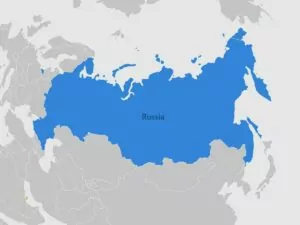
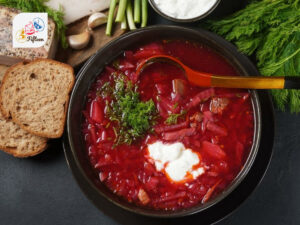
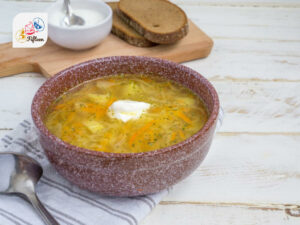
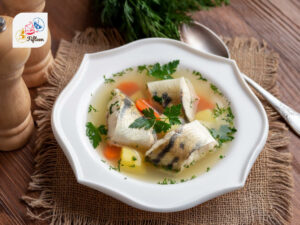
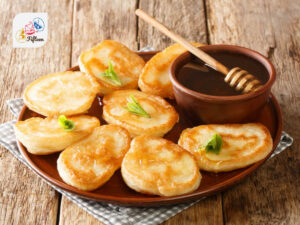
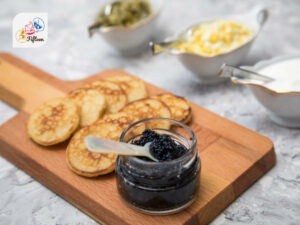

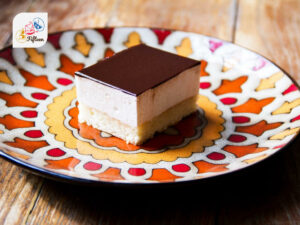

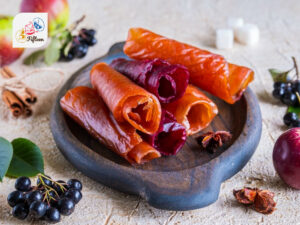
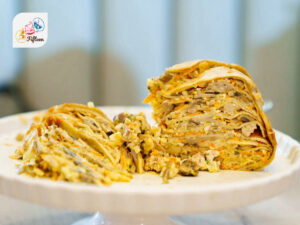
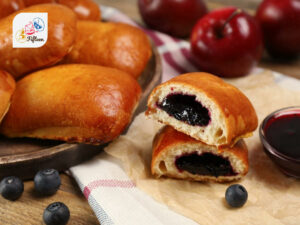
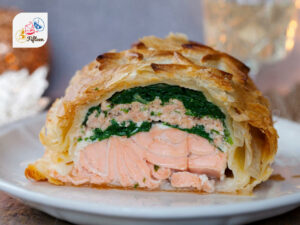
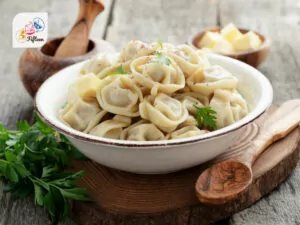
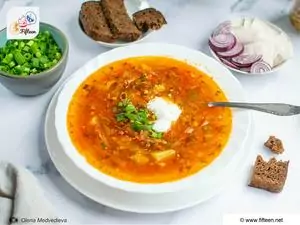
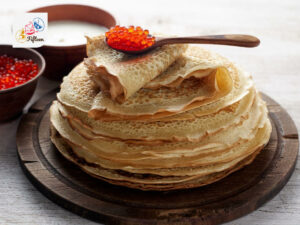

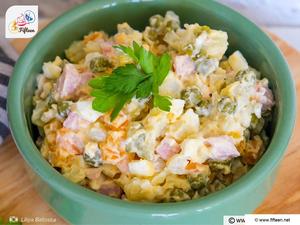
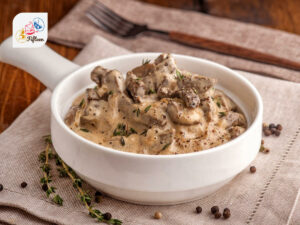
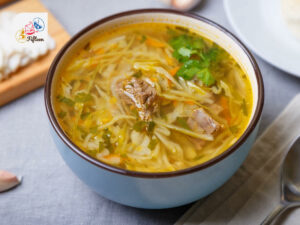
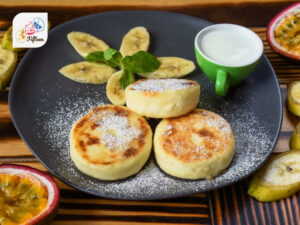
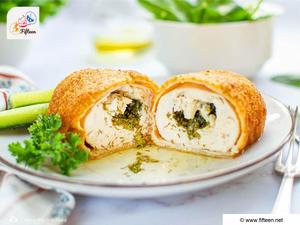
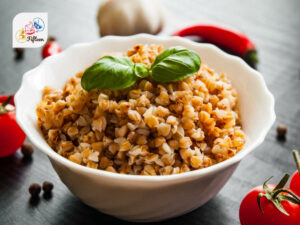
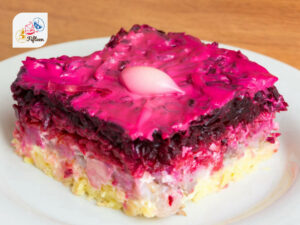
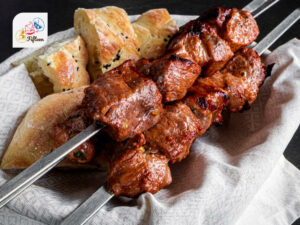
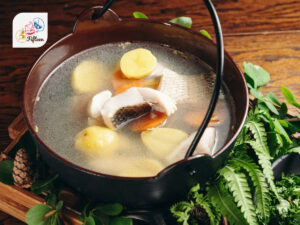
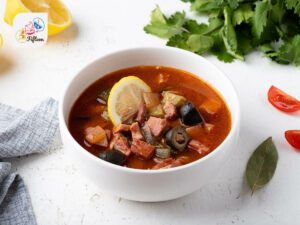
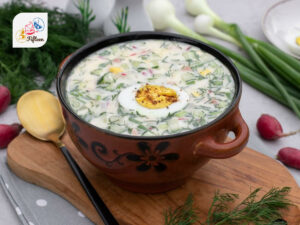
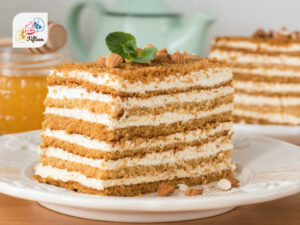
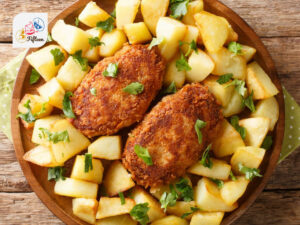
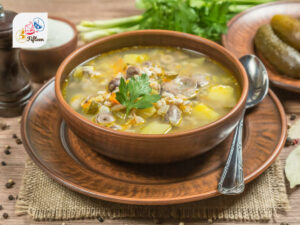
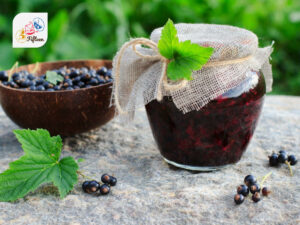
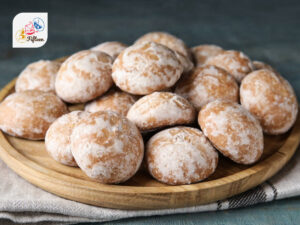

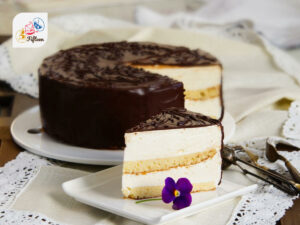
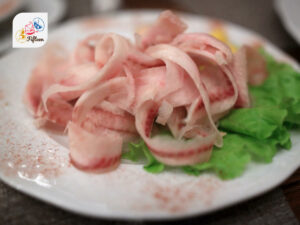
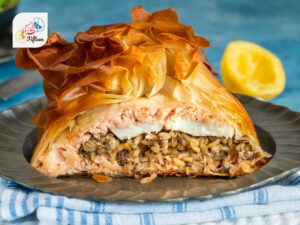

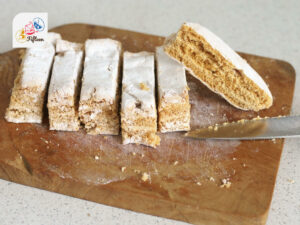





Jamie Scott
Editor in Chief, Senior Content Writer
Expertise
Home Cooking, Meal Planning, Recipe Development, Baking and Pastry, Food Editor, Cooking-video Maker, Western Food Evaluation Expert
Education
Le Cordon Bleu College of Culinary Arts
Local Community College, New York, NY
Jamie Scott is a skilled culinary expert and content creator specializing in Western cuisine. With over 15 years in the culinary field and formal training from Le Cordon Bleu, Paris, Jamie deeply understands how to blend nutrition with delicious flavors. His passion for cooking matches his commitment to making healthy eating accessible and enjoyable.
On Fifteen.net, Jamie brings a fresh perspective to classic dishes and beverages, offering readers insightful recipes, cooking tips, and a fresh view on meal planning that emphasizes taste, health, and simplicity.